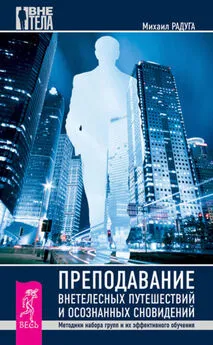Михаил Радуга - М99. Минимальный стандарт человека
- Название:М99. Минимальный стандарт человека
- Автор:
- Жанр:
- Издательство:неизвестно
- Год:неизвестен
- ISBN:9785005126467
- Рейтинг:
- Избранное:Добавить в избранное
-
Отзывы:
-
Ваша оценка:
Михаил Радуга - М99. Минимальный стандарт человека краткое содержание
М99. Минимальный стандарт человека - читать онлайн бесплатно ознакомительный отрывок
Интервал:
Закладка:
119
Strenze, Tarmo. (2007). Intelligence and Socioeconomic Success: A Meta-Analytic Review of Longitudinal Research. Intelligence . 35.
120
Daniele, Vittorio. (2013). Does the intelligence of populations determine the wealth of nations?. Journal of Socio-Economics . 46.
121
Yu, Zhangbin & Han, S & Cao, X & Guo, X. (2009). Intelligence in relation to obesity: A systematic review and meta-analysis. Obesity reviews: an official journal of the International Association for the Study of Obesity . 11
122
Maccann, Carolyn & Roberts, Richard. (2012). Just as smart but not as successful: Obese students obtain lower school grades but equivalent test scores to nonobese students. International journal of obesity (2005). 37.
123
Rosenblad, Andreas & Nilsson, Göran & Leppert, Jerzy. (2012). Intelligence level in late adolescence is inversely associated with BMI change during 22 years of follow-up: Results from the WICTORY study. European journal of epidemiology . 27.
124
Cawley, John & Spieß, C.. (2008). Obesity and skill attainment in early childhood. Economics & Human Biology . 6.
125
Belsky, Daniel & Caspi, Avshalom & Goldman-Mellor, Sidra & Meier, Madeline & Ramrakha, Sandhya & Poulton, Richie & Moffitt, Terrie. (2013). Is Obesity Associated With a Decline in Intelligence Quotient During the First Half of the Life Course?. American journal of epidemiology . 178.
126
Benito-León, Julián & Mitchell, Alex & Hernández-Gallego, Jesus & Bermejo-Pareja, Felix. (2013). Obesity and impaired cognitive functioning in the elderly: A population-based cross-sectional study (NEDICES). European journal of neurology: the official journal of the European Federation of Neurological Societies . 20.
127
Kanazawa, Satoshi. (2013). Childhood Intelligence and Adult Obesity. Obesity (Silver Spring, Md.). 21.
128
Sandjaja, Sandjaja & Poh, Bee & Rojroonwasinkul, Nipa & Nyugen, Bao & Budiman, Basuki & Ng, Alvin Lai Oon & Soonthorndhada, Kusol & Xuyen, Hoang & Deurenberg, Paul & Parikh, Panam. (2013). Relationship between anthropometric indicators and cognitive performance in South-East Asian school-aged children. British Journal of Nutrition . 110.
129
Galván, Marcos & Uauy, Ricardo & López-Rodríguez, Guadalupe & Kain, Juliana. (2014). Association between childhood obesity, cognitive development, physical fitness and social-emotional wellbeing in a transitional economy. Annals of human biology. 41.
130
Altschul, Drew & Wraw, Christina & Gale, Catharine & Deary, Ian. (2019). How youth cognitive and sociodemographic factors relate to the development of overweight and obesity in the UK and the USA: a prospective cross-cohort study of the National Child Development Study and National Longitudinal Study of Youth 1979. BMJ Open . 9.
131
Gale, Catharine & Hatch, Stephani & Batty, G. & Deary, Ian. (2009). Intelligence in childhood and risk of psychological distress in adulthood: The 1958 National Child Development Survey and the 1970 British Cohort Study. Intelligence . 37.
132
Hassiotis, Angela & Tanzarella, M & Bebbington, Paul & Cooper, Claudia. (2010). Prevalence and predictors of suicidal behaviour in a sample of adults with estimated borderline intellectual functioning: Results from a population survey. Journal of affective disorders . 129.
133
Veenhoven, Ruut & Choi, Yowon. (2012). Does Intelligence Boost Happiness? Smartness of All Pays More Than Being Smarter Than Others. Int. J. of Happiness and Development. 1.
134
Gow, Alan & Whiteman, Martha & Pattie, Alison & Whalley, Lawrence & Starr, John & Deary, Ian. (2005). Lifetime intellectual function and satisfaction with life in old age: Longitudinal cohort study. BMJ (Clinical research ed.). 331.
135
Ali, Afia & Ambler, G. & Strydom, A. & Rai, Dheeraj & Cooper, Claudia & McManus, Sally & Weich, Scott & Meltzer, H. & dein, Simon & Hassiotis, Angela. (2013). The relationship between happiness and intelligent quotient: The contribution of socio-economic and clinical factors. Psychological Medicine . 43.
136
Kanazawa, Satoshi. (2013). Why is intelligence associated with stability of happiness?. British Journal of Psychology . 105.
137
Stolarski, Maciej & Jasielska, Dorota & Zajenkowski, Marcin. (2014). Are all smart nations happier? Country aggregate IQ predicts happiness, but the relationship is moderated by individualism—collectivism. Intelligence . 50.
138
Gonzalez‐Mulé, Erik & Carter, Kameron & Mount, Michael. (2017). Are smarter people happier? Meta-analyses of the relationships between general mental ability and job and life satisfaction. Journal of Vocational Behavior . 99.
139
Dimitrijević, Ana & Marjanović, Zorana & Dimitrijevic, Aleksandar. (2018). Whichever intelligence makes you happy: The role of academic, emotional and practical abilities in predicting psychological well-being. Personality and Individual Differences . 132.
140
Ahmed, Rifaan & Kesavayuth, Dusanee & Zikos, Vasileios. (2018). Does being smarter make you happier? Evidence from Europe. Journal of Behavioral and Experimental Economics . 76.
141
Bailey, Drew & Geary, David. (2009). Hominid Brain Evolution. Human Nature . 20.
142
Hawks, John. (2011). Selection for smaller brains in Holocene human evolution.
143
Sherwood, Chet & Gordon, Adam & Allen, John & Phillips, Kimberley & Erwin, Joseph & Hof, Patrick & Hopkins, William. (2011). Aging of the cerebral cortex differs between humans and chimpanzees. Proceedings of the National Academy of Sciences of the United States of America. 108.
144
Laverick, Rosanna & Haddow, Lewis & Daskalopoulou, Marina & Lampe, Fiona & Gilson, Richard & Speakman, Andrew & Antinori, Andrea & Bruun, Tina & Vassilenko, Anna & Collins, Simon & Rodger, Alison. (2017). Self-reported difficulties with everyday function, cognitive symptoms and cognitive function in people with HIV. Journal of acquired immune deficiency syndromes (1999). 76.
145
Sizer, Alison. (2019). Non-employment, a risk factor for cognitive decline in later life?
146
Fryer, David & Warr, Peter. (1984). Unemployment and cognitive difficulties. The British journal of clinical psychology / the British Psychological Society . 23 (Pt 1).
147
Frese, Michael & Mohr, Gisela. (1987). Prolonged unemployment and depression in older workers: A longitudinal study of intervening variables. Social science & medicine (1982). 25 .
148
Paul, Karsten & Moser, Klaus. (2009). Unemployment Impairs Mental Health: Meta-Analyses. Journal of Vocational Behavior. 74.
149
Kamerāde, Daiga & Wang, Senhu & Burchell, Brendan & Balderson, Ursula & Coutts, Adam. (2019). A shorter working week for everyone: How much paid work is needed for mental health and well-being?. Social Science & Medicine . 241.
150
Raichle, Marus & Gusnard, Debra. (2002). Appraising the brain’s energy budget. Proceedings of the National Academy of Sciences of the United States of America . 99.
151
Kuzawa, Christopher & Chugani, Harry & Grossman, Lawrence I & Lipovich, Leonard & Muzik, Otto & Hof, Patrick & Wildman, Derek & Sherwood, Chet & Leonard, William & Lange, Nicholas. (2014). Metabolic costs and evolutionary implications of human brain development. Proceedings of the National Academy of Sciences of the United States of America . 111.
152
Özugur, Suzan & Kunz, Lars & Straka, Hans. (2020). Relationship between oxygen consumption and neuronal activity in a defined neural circuit. BMC Biology . 18.
153
Coren, Stanley. (1994). The Intelligence of Dogs: Canine Consciousness and Capabilities . Free Press.
154
Cook, Amanda & Sridhar, Jaiashre & Ohm, Daniel & Rademaker, Alfred & Mesulam, M.-Marsel & Weintraub, Sandra & Rogalski, Emily. (2017). Rates of Cortical Atrophy in Adults 80 Years and Older With Superior vs Average Episodic Memory. JAMA . 317.
155
Paulozzi, Leonard. (2005). The role of sales of new motorcycles in a recent increase in motorcycle mortality rates. Journal of safety research . 36.
156
Redelmeier, Donald & Shafir, Eldar. (2017). The full moon and motorcycle related mortality: population based double control study. BMJ. 359.
157
National Highway Traffic Safety Administration (2019, May 26) Traffic Safety Facts: Motorcycles. Retrieved from https://crashstats.nhtsa.dot.gov/Api/Public/ViewPublication/812492
158
Grabowski, David & Morrisey, Michael. (2004). Gasoline prices and motor vehicle fatalities. Journal of Policy Analysis and Management . 23.
159
Oliveira, Nelson & Sousa, Regina. (2011). Traffic Accidents with Motorcycles and their Relationship to Mortality. Revista latino-americana de enfermagem. 19.
160
Chandran, Aruna & Sousa, Tanara & Guo, Yayi & Bishai, David & Pechansky, Flavio. (2012). Road Traffic Deaths in Brazil: Rising Trends in Pedestrian and Motorcycle Occupant Deaths. Traffic injury prevention . 13.
161
Zhu, He & Wilson, Fernando & Stimpson, Jim & Hilsenrath, Peter. (2015). Rising gasoline prices increase new motorcycle sales and fatalities. Injury Epidemiology. 2.
162
Puac Polanco, Victor & Keyes, Katherine & Li, Guohua. (2016). Mortality from motorcycle crashes: the baby-boomer cohort effect. Injury Epidemiology . 3.
163
Pavanitto, Drielle & Menezes, Renata & Nascimento, Luiz. (2018). Accidents involving motorcycles and potential years of life lost. An ecological and exploratory study. Sao Paulo Medical Journal. 136.
164
Sadeghi-Bazargani, Homayoun & Samadirad, Bahram & Hosseinpour-Feizi, Hojjat. (2018). Epidemiology of Traffic Fatalities among Motorcycle Users in East Azerbaijan, Iran. BioMed Research International. 2018.
165
Soreide, Kjetil & Ellingsen, Christian & Knutson, Vibeke. (2007). How Dangerous is BASE Jumping? An Analysis of Adverse Events in 20,850 Jumps From the Kjerag Massif, Norway. The Journal of trauma. 62.
166
McIntosh, Andrew & Fortington, Lauren & Patton, Declan & Finch, Caroline. (2017). EXTREME SPORTS, EXTREME RISKS. FATALITIES IN EXTREME SPORTS IN AUSTRALIA. British Journal of Sports Medicine . 51.
Читать дальшеИнтервал:
Закладка:









